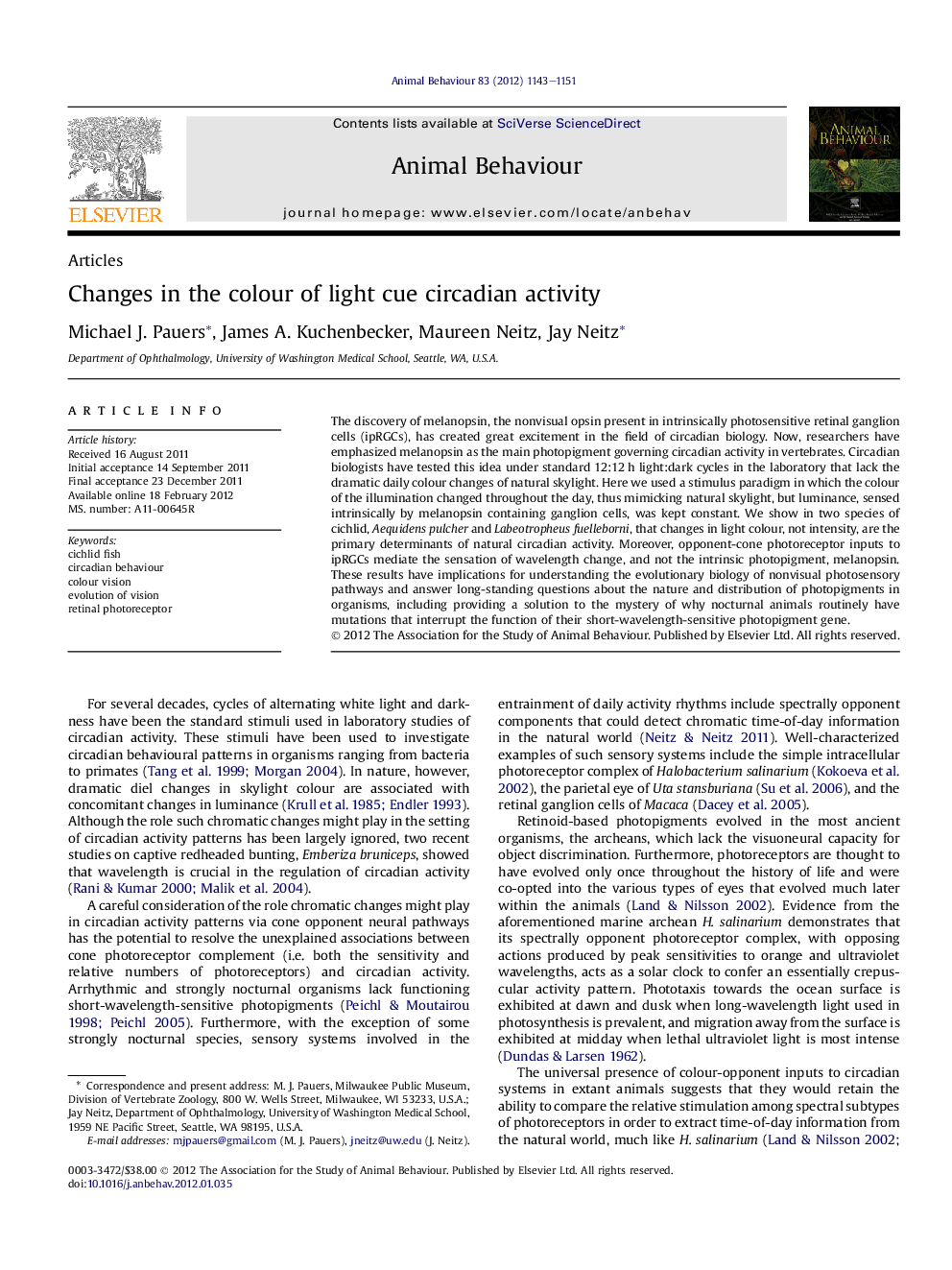| Article ID | Journal | Published Year | Pages | File Type |
|---|---|---|---|---|
| 2416889 | Animal Behaviour | 2012 | 9 Pages |
The discovery of melanopsin, the nonvisual opsin present in intrinsically photosensitive retinal ganglion cells (ipRGCs), has created great excitement in the field of circadian biology. Now, researchers have emphasized melanopsin as the main photopigment governing circadian activity in vertebrates. Circadian biologists have tested this idea under standard 12:12 h light:dark cycles in the laboratory that lack the dramatic daily colour changes of natural skylight. Here we used a stimulus paradigm in which the colour of the illumination changed throughout the day, thus mimicking natural skylight, but luminance, sensed intrinsically by melanopsin containing ganglion cells, was kept constant. We show in two species of cichlid, Aequidens pulcher and Labeotropheus fuelleborni, that changes in light colour, not intensity, are the primary determinants of natural circadian activity. Moreover, opponent-cone photoreceptor inputs to ipRGCs mediate the sensation of wavelength change, and not the intrinsic photopigment, melanopsin. These results have implications for understanding the evolutionary biology of nonvisual photosensory pathways and answer long-standing questions about the nature and distribution of photopigments in organisms, including providing a solution to the mystery of why nocturnal animals routinely have mutations that interrupt the function of their short-wavelength-sensitive photopigment gene.
► Circadian activity in fish was controlled by colour changes, and not transitions from light to dark. ► Activity was synchronized by cone photoreceptors wired into colour opponent circuits that entrain the biological clock. ► Orange light aroused fish, and blue calmed them; chromatic illumination mimicking nature led to crepuscular activity. ► The effect of colour on arousal and motivation observed in cichlids is probably common to many vertebrates. ► Genetic changes affecting cone photoreceptor number or type is a mechanism for evolving new activity patterns.
